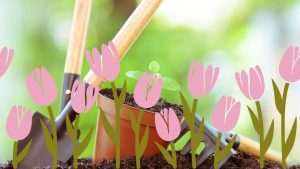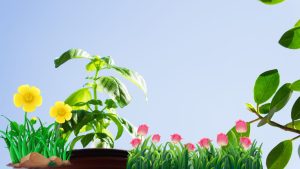Best Plants for Urban Gardening with Limited Sunlight

When working with low-light conditions, it’s crucial to choose plants that naturally tolerate or even prefer shade. Fortunately, many plants thrive with minimal sunlight, including herbs, leafy vegetables, and certain flowers.
Herbs for Low-Light Urban Gardens
Herbs are fantastic for urban gardening with limited sunlight, especially if your space is primarily shaded. Most soft-leafed herbs grow well with just a few hours of light each day. Not only do these herbs provide fresh flavors for your kitchen, but they are also easy to grow in containers, making them perfect for small urban spaces. Some of the best herbs for low-light environments include:
- Chives: Chives are hardy and thrive in shaded areas. They provide a mild onion flavor and are perfect for garnishing salads, soups, and other dishes.
- Oregano: This aromatic herb grows well in partial shade and can be a versatile addition to your urban garden.
- Parsley: Parsley is resilient and grows well in containers, even with limited sunlight.
- Tarragon: This herb has a distinct licorice flavor and does well in low-light conditions, making it a great choice for your urban herb garden.
- Cilantro: Cilantro enjoys cooler temperatures and can grow in partial shade, which makes it a good candidate for shaded urban spaces.
- Mint: Mint thrives in low light but can be invasive, so it’s best to grow it in a separate container to prevent it from overtaking other plants.

Vegetables for Urban Shade Gardens
For urban gardeners with limited sunlight, leafy vegetables are a great option. These plants generally require less light to thrive and are perfect for container gardening. Some excellent choices include:
- Loose-leaf Lettuce: Unlike head lettuce, which needs more sun, loose-leaf varieties can grow well with just a few hours of sunlight.
- Spinach: Spinach is another shade-tolerant vegetable that proliferates and is easy to care for.
- Kale: Kale is extremely hardy and can thrive in partial shade, providing a continuous harvest throughout the growing season.
- Radishes: While root vegetables often require more sunlight, radishes are an exception. They can grow in limited light, making them ideal for urban gardens.
Flowers for Low-Light Gardens
Though many flowers require full sun, several do well in low-light conditions, adding beauty and color to your urban garden. Consider these options:
- Impatiens: These colorful flowers are shade-loving and can brighten up even the darkest corners of your garden.
- Begonias: With their vibrant blooms, begonias are excellent for container gardening in shaded areas.
- Astilbe: This plant adds texture and soft, feathery blooms to shaded garden spaces.
Potted Plants for Evening Sun
For areas of your garden that receive a few hours of sunlight in the late afternoon or evening, there are a variety of plants that can thrive. These potted plants for evening sun include:
- Hostas: Known for their lush, broad leaves, hostas do well with only a few hours of sunlight and are a great addition to shaded urban gardens.
- Caladiums: Caladiums offer a burst of color with their brightly patterned leaves and grow well in containers with partial shade.
- Snake Plants: These hardy plants can tolerate low light and are a favorite for urban gardeners due to their low maintenance.

Tips for Successful Urban Gardening with Limited Sunlight
Now that you have an idea of which plants thrive in limited sunlight, let’s explore some essential tips to help you get the most out of your urban garden.
1. Maximize Reflective Surfaces
If your urban garden is shaded by nearby buildings or walls, consider using reflective surfaces to bounce light into darker areas. Painting walls or fences white or using reflective materials can increase the amount of light your plants receive, even in shaded areas.
2. Use Lightweight Containers
Urban gardening often requires you to be flexible with the placement of your plants. Lightweight pots and containers allow you to move plants around to catch the sunlight as it shifts throughout the day. This is especially important if your garden space only receives a few hours of direct sunlight.
3. Choose the Right Soil
Plants growing in limited sunlight can sometimes struggle with moisture management, as shaded areas tend to dry out more slowly than sunnier spots. Use a well-draining soil mix to prevent waterlogging, and ensure your containers have adequate drainage holes.
4. Water Wisely
In shaded gardens, water evaporates more slowly, so it’s crucial not to overwater your plants. Check the moisture level in the soil before watering and be sure to let it dry out between waterings to avoid root rot.
5. Vertical Gardening for Small Spaces
If space is at a premium, vertical gardening is an excellent solution. Use trellises, hanging baskets, or even wall-mounted planters to grow vertically and make the most of your limited space. This method also allows you to better position plants to receive the sunlight they need.
6. Pruning and Training for Maximum Light
Regular pruning helps ensure that all parts of your plants receive enough light. Remove dead or crowded foliage to allow light to penetrate deeper into the plant’s canopy. For climbing plants, proper training on trellises ensures they grow upward rather than sprawling, which can block light from reaching other plants.
Plants for Specific Light Conditions
Different plants thrive in different light conditions. Here’s a guide to help you choose plants based on the specific amount of sunlight your urban garden receives:
- 3 Hours Sun Plants: If your garden only receives about three hours of sunlight per day, stick to plants that can tolerate very low light. Examples include mint, parsley, and loose-leaf lettuce.
- 4 Hours Sun Plants: Gardens that get about four hours of sunlight can grow a wider variety of plants, such as oregano, spinach, kale, and begonias. These plants need moderate light but don’t require full sun to thrive.

FAQs: Urban Gardening with Limited Sunlight
Q1: Can I grow vegetables with only a few hours of sunlight per day?
Yes, many leafy vegetables like lettuce, spinach, and kale can grow with just a few hours of sunlight. Root vegetables, however, typically need more light to thrive.
Q2: What are the best herbs for low-light urban gardens?
Soft-leafed herbs like chives, oregano, parsley, cilantro, and mint are ideal for low-light urban gardens. These herbs can thrive with only 3 to 4 hours of sunlight per day.
Q3: How can I increase the amount of sunlight in my urban garden?
Using reflective surfaces like white walls or light-colored materials can help bounce sunlight into shaded areas. You can also use lightweight containers to move your plants throughout the day to catch sunlight.
Q4: Are there any flowers that can grow in limited sunlight?
Yes, flowers like impatiens, begonias, and astilbe can thrive in low-light conditions and add beauty to your urban garden.
Q5: How do I care for plants in shaded urban gardens?
In low-light conditions, it’s important to water less frequently and ensure your plants are in well-draining soil. Prune regularly to prevent overcrowding and allow more light to reach the plant’s leaves.
By selecting the right plants, using clever gardening techniques, and embracing your space’s unique light conditions, urban gardening with limited sunlight can be a fulfilling and enjoyable experience. Whether you’re growing herbs, vegetables, or flowers, even the shadiest urban garden can become a thriving green sanctuary.
